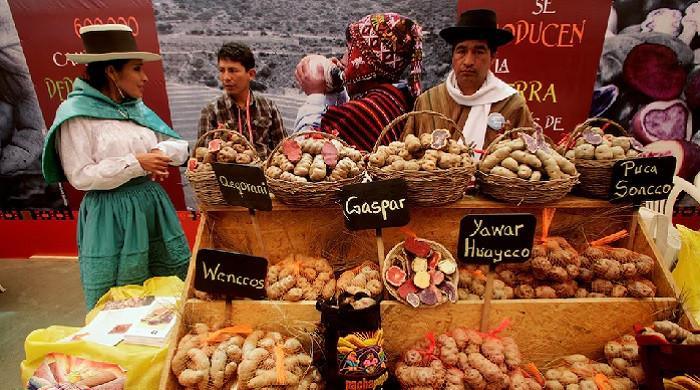- The natural hybridization event occurred 9 million years ago.
- The unusual involved tomatoes and a potato -shaped species.
- The study analyzed the genomes of cultivated and wild potatoes.
The potato is one of the food staples in the world, first cultivated thousands of years in the Andes region in South America before spreading into the world from the 16th century. But despite its importance for humanity, the evolutionary origins of the potato have remained confusing – so far.
A new analysis of 450 genomes of cultivated potatoes and 56 genomes of wild potato species revealed that the line of potatoes came from the natural crossing between a wild tomato plant and a species of potato type in South America about 9 million years ago.
This hybridization event led to the appearance of the tuber of the emerging potato plant, an enlarged structure housing underground nutrients, according to the researchers, who also identified two crucial genes involved in the formation of tuberculum. While in a tomato plant, the edible part is the fruit, in the potato plant, it is the tuber.
“Potatoes are really one of the most remarkable foods in humanity, combining extraordinary versatility, nutritional value and cultural ubiquity in a way that few cultures can match,” said Sanwen Huang, genome biologist and plant breeders at the Academy of Agricultural Science and Main Author of the study published on Friday in the Revue cell.
“People eat potatoes using practically all cooking methods – cooking, roasting, boiling, steaming and frying. Although it is stereotypical in the form of carbohydrates, potatoes offer vitamin C, potassium, fibers and resistant starch, and are naturally gluten -free, low -fat and salia. Nutrients, “added Huang.
Resistant starch is a type of carbohydrates that resists digestion in the small intestine and ferments in the large intestine, nourishing beneficial bacteria in the intestine.
The scientific name of the modern potato plant is Solanum Tuberosum. His two parents identified in the study were plants which were the ancestors of a species similar to a potato, now in Peru, named Etuberosum, which closely resembles the potato plant but has no tuber and the tomato plant.
These two plants themselves shared a common ancestor who lived around 14 million years ago and was able to undertake naturally when the fortuitous hybridization event occurred five million years after having diverged from each other.
“This event has led to a reshuffle of genes so that the new line has produced tubers, allowing these plants to develop in the cold and dry habitats of the Rising Andes mountain range,” said botanist Sandra Knapp of the Natural History Museum in London, co-author of the study.
This hybridization event coincided with the rapid uprising of the Andes. With a tuber, the potato factory was able to adapt to the changing regional environment and prosper in the difficult mountain conditions.
“The tubers can store nutrients for adaptation to cold and allow asexual reproduction to take up the challenge of reduced fertility in cold conditions. These allowed the plant to survive and develop quickly,” said Huang.
The results of the study, according to the researchers, can help guide the improvement of the cultivated farming of potatoes to meet the environmental challenges that crops are currently faced due to factors such as climate change.
There are currently about 5,000 varieties of potatoes. The potato is the third most important food culture in the world, after rice and wheat, for human consumption, according to the international research organization of the Potato Center, based in Peru. China is the leading potato producer in the world.
“It is always difficult to eliminate all the deleterious mutations of potato genomes in reproduction, and this study opens a new door to make a potato free from deleterious mutations using tomatoes as a synthetic biology chassis,” said Huang.
The study can also open the door to the generation of a new species of cultivation that could produce tomato fruits above the ground and potato tubers under the ground, according to Zhiyang Zhang, a postdoctoral researcher at the Chinese Academy of Agricultural Sciences.
Potatoes and tomatoes are members of the family of flower plants which also include tobacco and peppers, among others. The study has not studied the evolutionary origins of other cultures of tuberous roots which come from South America, such as sweet potato and Yuca, which are members of different families of flower plants.
While the parts of tomato and potatoes that people eat are quite different, the plants themselves are very similar.
“We use different parts of these two species, fruit in tomatoes and potatoes,” said Knapp. “If you look at the flowers or leaves, they are very similar. And if you are lucky to let your potato plant produce fruit, they look like small green tomatoes. But don’t eat them. They are not very nice.”




